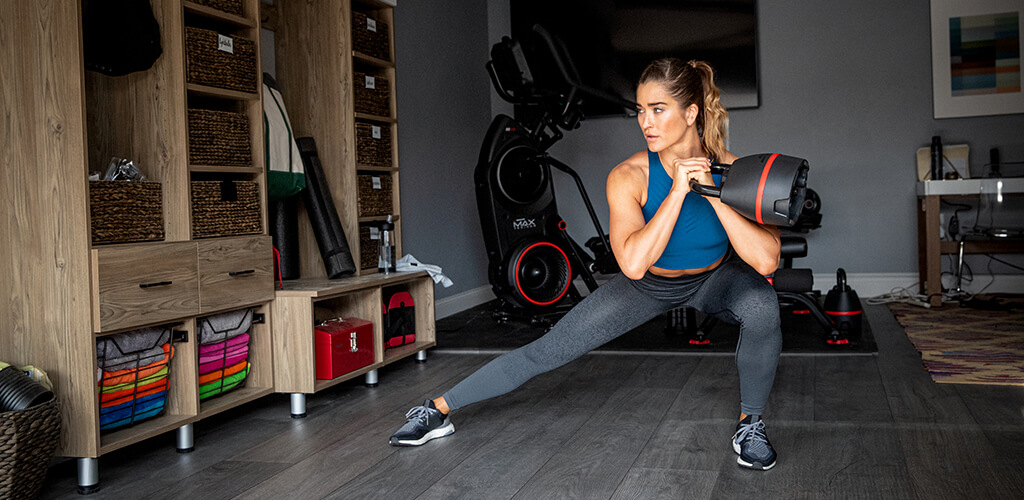Fit Tip: Four Tips on Dealing with (and Preventing) Knee Pain

A few quick statistics: Knee pain, the second most cause of chronic pain, affects roughly 100 million Americans. Women experience more knee pain than do men, and over one-third of all Americans report experiencing knee pain at some point in their lives. Unfortunately, most people don’t think about the issue of knee pain, and how to potentially prevent it, until they begin to experience it themselves.
Notice I didn’t say “until it was too late.” There are numerous things you can do to help alleviate knee pain, even if you are experiencing it currently.
There are many potential causes of knee discomfort, including both acute injuries and chronic issues. A few of the more common causes of knee pain include osteoarthritis, ligament strains and sprains, fractures around the knee, overuse and being overweight. As with all medical issues, If you are experiencing knee pain you should seek the advice of your doctor first.
As I stated previously, there are certain things you can do to help protect your knees and keep them healthy for many years to come, as well as help to alleviate knee pain if you are currently experiencing discomfort right now.

- Lose Excess Weight
Many people don’t realize the stress that carrying around excess weight 24 hours a day, 7 days a week puts on the joints, especially the knees. Being just 10 pounds over your healthy weight can add an additional 30 to 40 pounds of force on your knees with every step. Being overweight can also change your body’s natural gait, adding additional unwanted stress to the knee joints. Research has shown that losing weight can result in a much lower risk later in life of osteoarthritis, one of the most common causes of knee pain. A 2017 study in the journal Radiology found that subjects who lost weight over 48 months showed significantly less degeneration of the cartilage in their knees, and those who lost more weight had slower progressions of degeneration as well.
- Strength Train
The stronger the muscles are around your knees the more stable the joints will be, and this stability will help protect your knees, slow the degeneration of cartilage and decrease your likelihood of knee discomfort. Performing lower body exercises are crucial, therefore, to protecting your knees and keeping them healthy. As I often say, you can do these lower body exercises either as prehab or as rehab – Try to them as preventative measures before you experience the all-too-common uncomfortable knee pain.
- Move More
We were meant to move, and to move frequently. Although it seems counterintuitive to many, lack of movement can in fact be more harmful to the knees than frequent exercise. The less you move the weaker the muscles around the knees, and the greater the potential for dysfunction and pain. Movement helps to lubricate the joints, it brings in nutrients and it helps remove waste products. It can also reduce swelling and pain in damaged joints and help improve the symptoms of arthritis.
- Mix Up Your Movement
While movement is indeed a huge plus, you also want to mix up your activities as well. Why? Performing the same sport or movement pattern over and over can lead to repetitive stress issues, often presenting in the knees, no matter how healthy the movement may be. It can also lead to muscular imbalances as well. Simply varying your types of movement and recreational activities can help decrease the likelihood of overuse issues, while strengthening and balancing the muscles around the knees as well.
My newest book, The Micro Workout Plan, contains dozens of workouts that you can do at right at home with just bodyweight and dumbbells. Each individual micro workout is five minutes in length, but don’t be fooled by the short duration; They are extremely effective and meant to be done throughout the day, whenever you have an open window of time. You can also “stack” them to create longer sessions as well as to add variation and focus on different muscle groups.
Here is one of the lower body workouts in the book that can help decrease knee pain and strengthen and stabilize the muscles around the joints as well:
Lower Body 1
- Squats (30 seconds)
- Stationary Lunges (30 seconds each side)
- One-Leg Floor Touch (15 seconds each side)
- Standing Calf Raises (30 seconds)
Perform the circuit two times through for a total workout time of five minutes. Do the workout three times per week on non-consecutive days.
You may also like
Fit Tip: 5 Benefits of Walking

